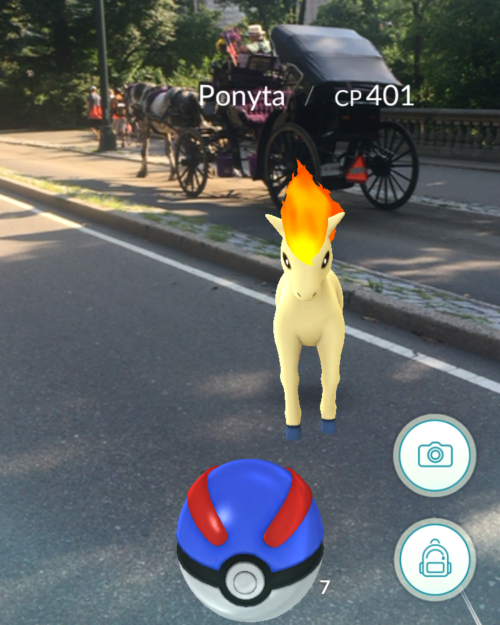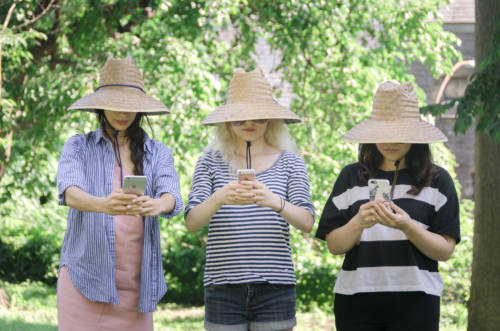
Pokémon Go Is Changing How Urbanites Experience Nature
Pokémon Go has been out for less than week but it’s no understatement to say it has changed the world, undeniably marking a futuristic chapter in our history just as virtual reality becomes an increasingly integrated aspect of our daily lives.
But perhaps the biggest– and most talked about– surprise has been how Pokémon Go has managed to get people outdoors and exploring. Memes upon memes have pointed out the irony of how, in a single power move, a video game company has managed to get people out of the house and exercising, enjoying nature through augmented reality.
For those first discovering Pokémon, the general rule of thumb has been that types of Pokémon will congregate where you would expect them: water types by rivers and lakes, fire types near gas stations, ghost types out at night. Of all the parks in New York City, Central Park offers the widest variety of landscape– so the GC team put on our favorite hats and decided to see just how many different types of Pokémon we could collect. Read below for some essential outdoor Poké-collecting tips.
What We Found
Central Park, like the rest of New York City, is dominated by Pidgeys, Spearows, Zubats, and Rattatas. Weedles, Catterpies, Oddishes, and Pinsirs are also well represented, in keeping with distribution of grass and bug-type Pokémon in parks. But there were also a great deal of Eevees wandering around. Closer to water (like at the Harlem Meer), Magikarps started appearing. Perhaps most thrilling was when our Graphic Designer found a Ponyta right by the horse-and-buggy rides that leave from the Southeast side of the park.

How To Catch ‘Em All In Central Park
- If you’re planning on meandering the park, arm yourself with an incense (you get some to start with, and can pick up more at Pokéstops, so don’t bother spending money on them). Unlike a lure, the incense will follow you, attracting Pokémon for thirty minutes.
- Make sure you’ve got eggs in any incubators you may have, so you can cash in on any walking you do (our Staff Writer hatched her Snorlax!).
- The meaning of the footsteps on the tracker remains somewhat controversial, but the general assumption is that each footstep correlates to 100 meters. Users have also crowdsourced a method to track Pokémon through footsteps, if you’re willing to drag out some high school geometry.
- The position of the Pokémon on the tracker also matters– the top left corner will show Pokémon closest to you, and those in the bottom right corner will display those furthest away.
- Turn your energy saver on while you’re out (you can do this in Settings). This will save battery but will still track your footsteps and buzz when Pokémon are nearby.
- In addition to the Pokémon themselves, Central Park is crowded with statues and other monuments, meaning there are Pokéstops every few feet, and plenty of gyms if you’re feeling feisty.
- Refresh time on Pokéstops is about five minutes, so don’t worry about taking a winding path through the park– you can pick up Pokéballs and Razz Berries at the same place several times.
There are advantages and disadvantages to spending time in Central Park– the density of people means the servers are crash-prone (or at least they were during our excursion), but having so many people around also means a lot of the Pokéstops have lures attached to them, which you can definitely cash in on– all while enjoying the real-life glories of nature.


































